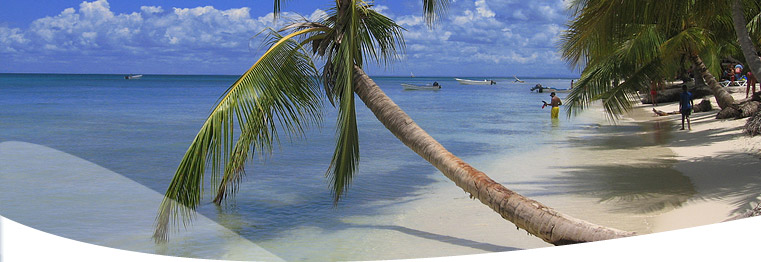|
The main historical element in HigŁey is the Cathedral, which holds the famous painting of the "Virgen de la Altagracia", brought by the Spaniards in the 15th century. The painting was moved from its original location in the 500 year old church of San Dionisio. Every year on Virgin of La Altagracia Day (January 21),a national holiday, tens of thousands of pilgrims visit the Cathedral.
|




